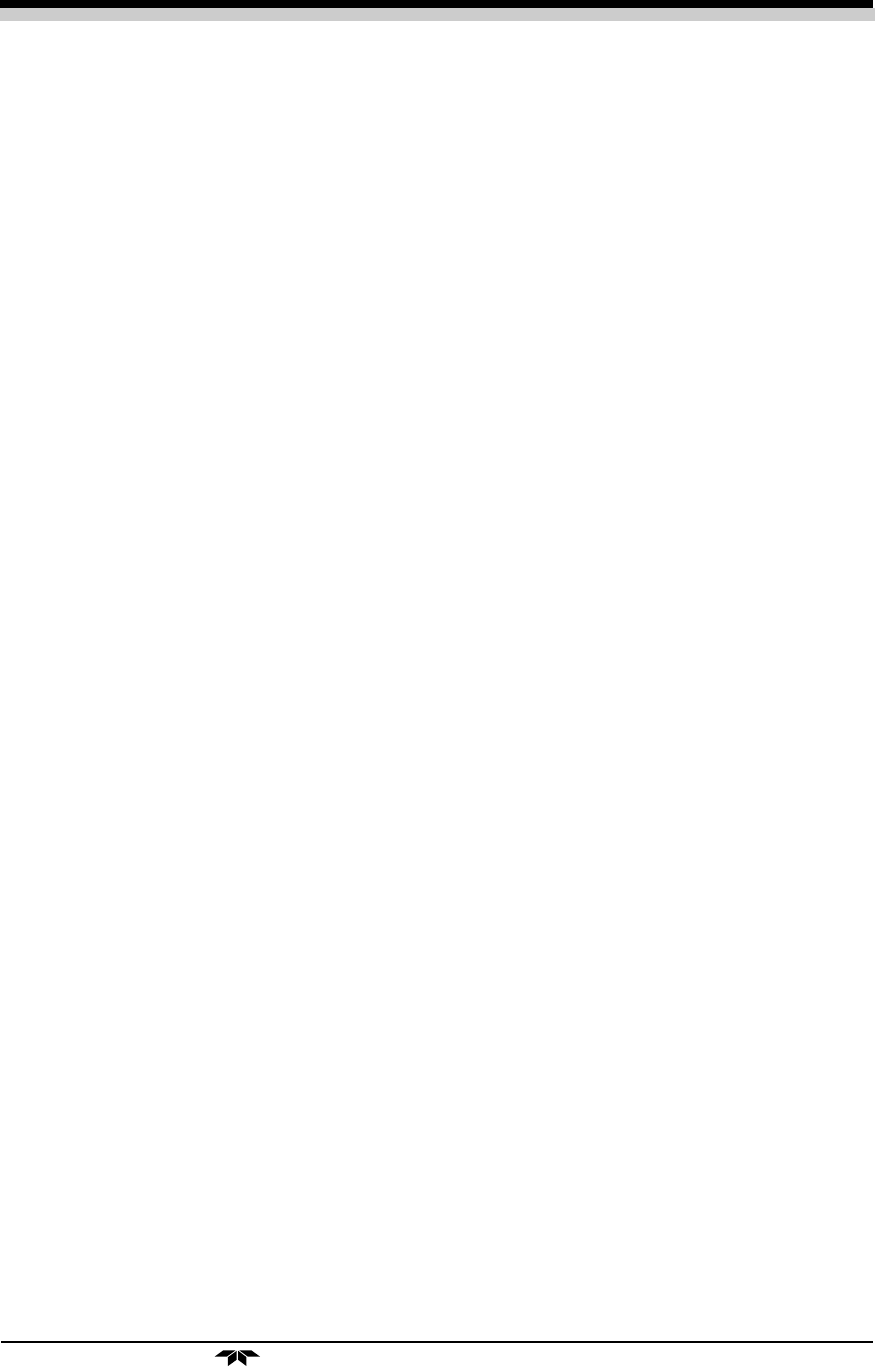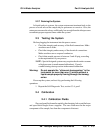
Oil in Water Analyzer Part II: Analysis Unit
Part II: 2-3
Teledyne Analytical Instruments
2.2.7 Draining the System
In liquid analysis systems, the system return must terminate back to the
process or a safe area as the sample may be poisonous or corrosive. Olso, the
return pressure must be always sufficiently low enough from the inlet pressure
to maintain proper response times within the system.
2.3 Testing the System
Before plugging the instrument into the power source:
• Check the integrity and accuracy of the fluid connections. Make
sure there are no leaks.
• Check the integrity and accuracy of the electrical connections.
Make sure there are no exposed conductors
• Check that sample pressure is between 3 and 40 psig, according
to the requirements of your process.
NOTE: Special designed systems may require checks under vacuum
or high pressure (consult manual addendum). Consult
commissioning start-up section in the manual addendum.
Warning: Do not operate the “ultrasonic homogenizer” in the
instrument for more than one (1) minute without a
liquid sample properly flowing through the homog-
enizer.
Power up the system, and test it by performing the following
operations:
1. Repeat the Self-Diagnostic Test, section 3.3.4, part I
2.4 Calibration
2.4.1 Calibration Fluids
Zero and span fluids must be made by the chemistry lab or certified zero
and span fluids bought from a supplier. The zero fluid must be the major
component of the sample, free from the component of interest.


















